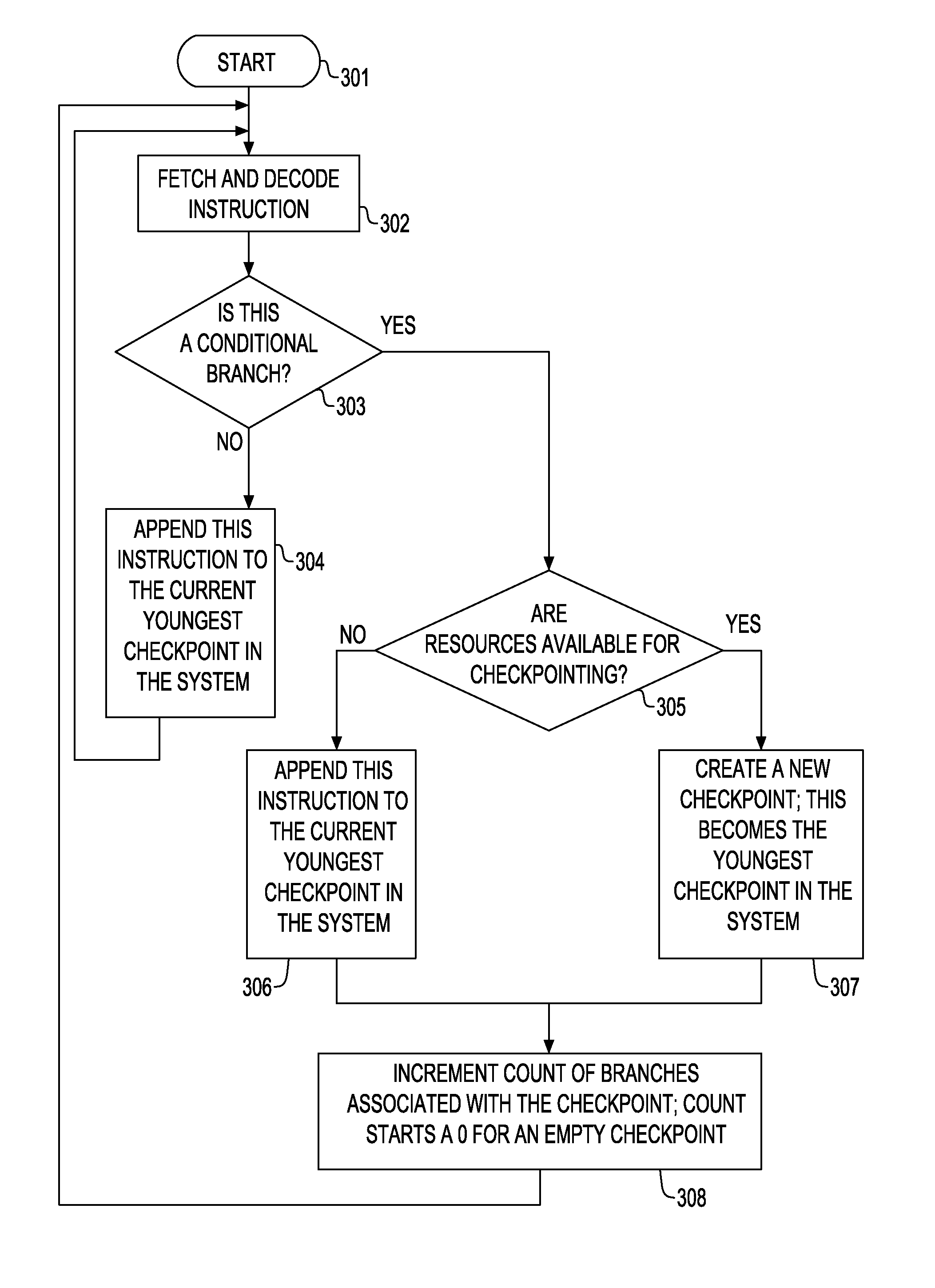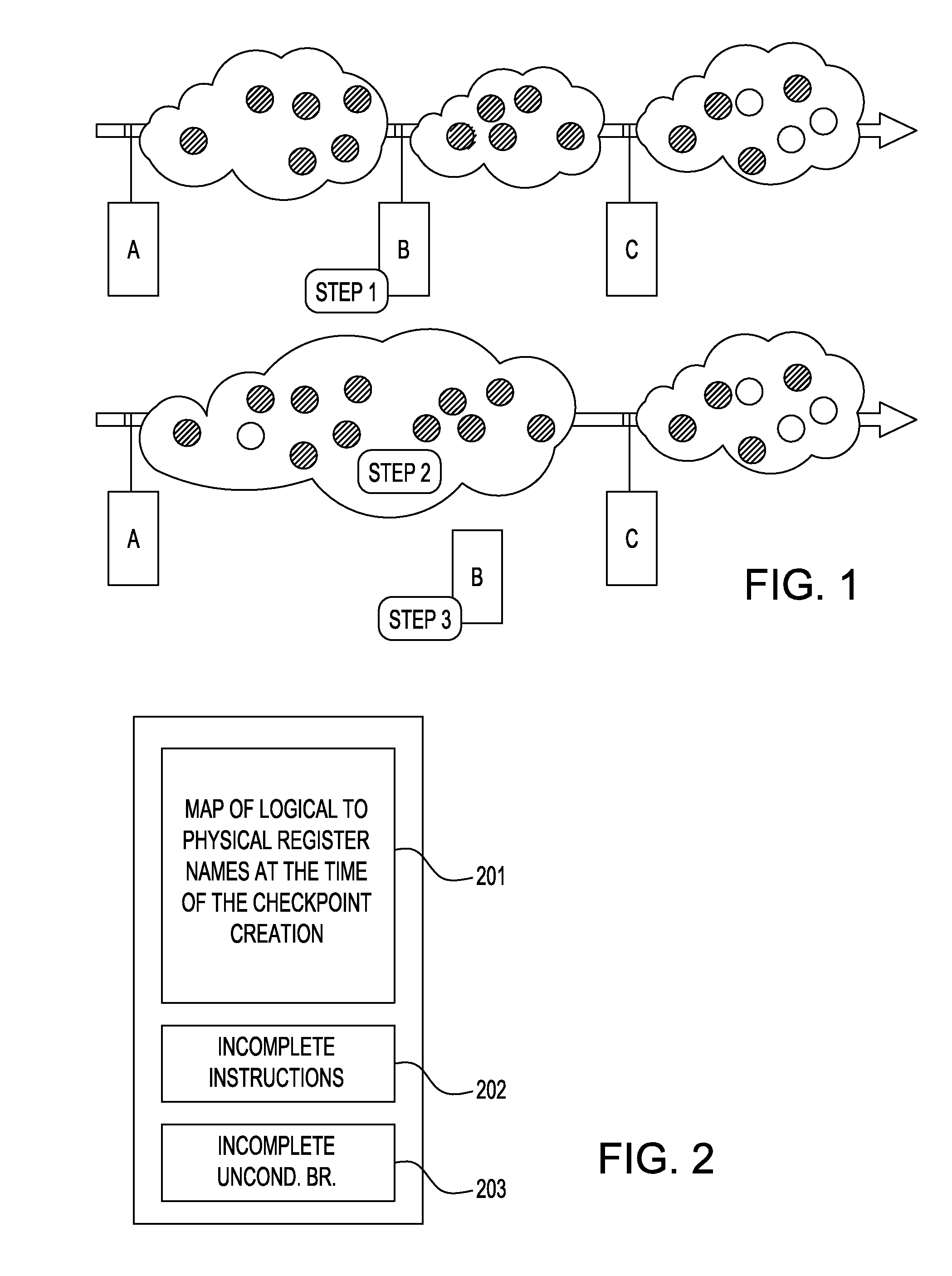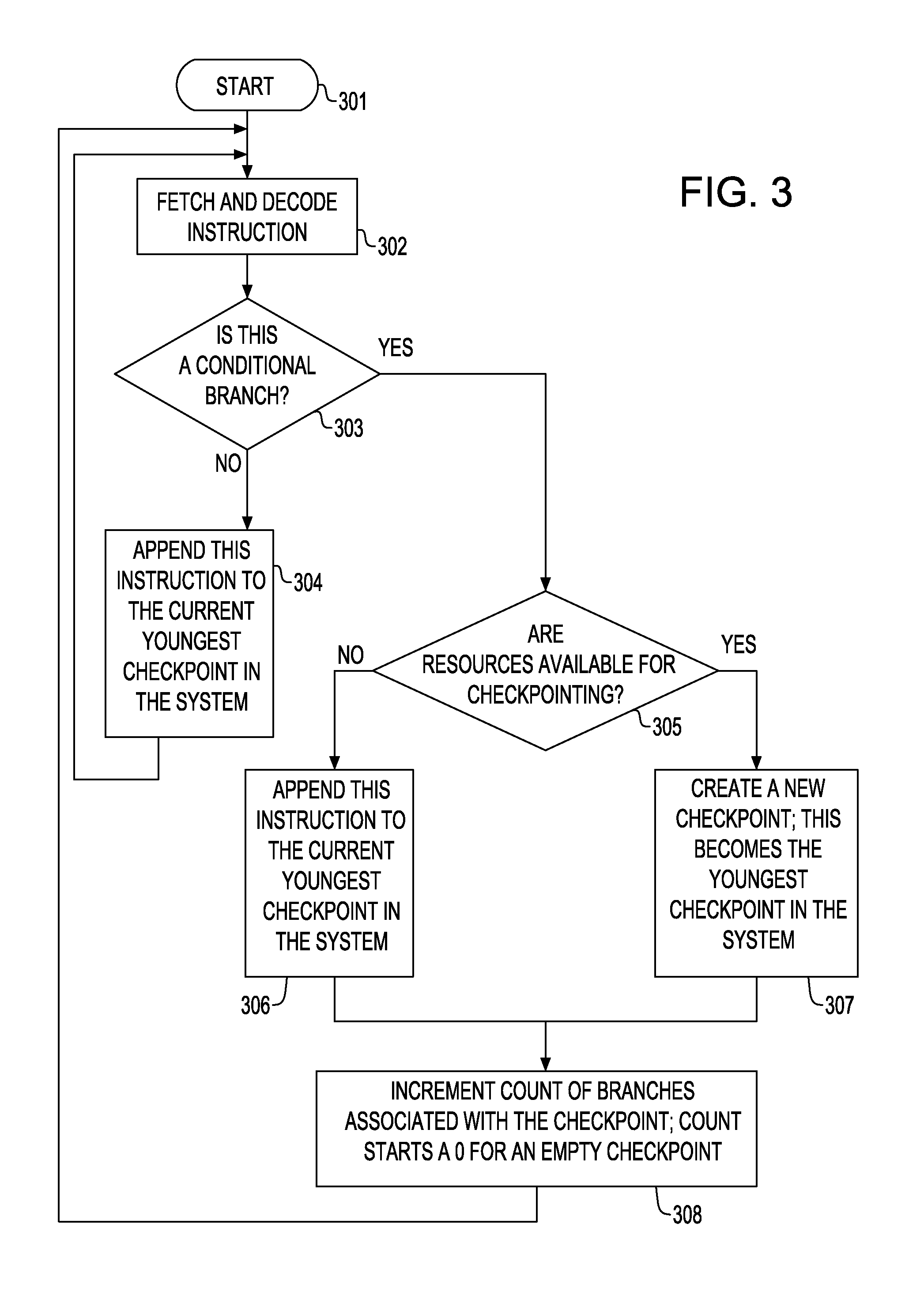Out-of-Order Checkpoint Reclamation in a Checkpoint Processing and Recovery Core Microarchitecture
a microarchitecture and checkpoint technology, applied in the field of microprocessors relying on checkpoint processing and recovery microarchitecture, can solve the problems of affecting the frequency, the dependence of rob and prf size correlation, and the size of prf can directly affect the cycle time (frequency) of the design
- Summary
- Abstract
- Description
- Claims
- Application Information
AI Technical Summary
Benefits of technology
Problems solved by technology
Method used
Image
Examples
Embodiment Construction
[0032]In one embodiment of the invention, a solution is provided that is based on two principles. Firstly, most instructions, including branches, complete the execution within a few cycles (at most a few tens of cycles) once they are fetched, decoded and renamed, preferably after being placed into a speculative instruction window. On the other hand, an instruction commit can span over hundreds of cycles if the instruction is stuck, e.g., behind a load miss to memory or other long latency operations. It is precisely for this reason that large speculative windows are required to extract Instruction Level Parallelism (ILP).
[0033]Secondly, a checkpoint bears two fundamental functions: rolling back the state upon detecting a mis-speculation and committing instructions in program order. The first function of the checkpoint is satisfied as soon as it can be guaranteed that there is no reason for executing a roll back to the checkpoint, which can be guaranteed as soon as all the branches as...
PUM
 Login to View More
Login to View More Abstract
Description
Claims
Application Information
 Login to View More
Login to View More - R&D
- Intellectual Property
- Life Sciences
- Materials
- Tech Scout
- Unparalleled Data Quality
- Higher Quality Content
- 60% Fewer Hallucinations
Browse by: Latest US Patents, China's latest patents, Technical Efficacy Thesaurus, Application Domain, Technology Topic, Popular Technical Reports.
© 2025 PatSnap. All rights reserved.Legal|Privacy policy|Modern Slavery Act Transparency Statement|Sitemap|About US| Contact US: help@patsnap.com



